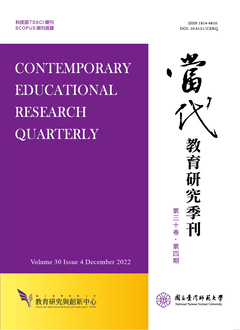

世界各國已逐步提升永續發展之概念,高等教育機構之大學若能從事永續教育之推展工作,應可發揮永續發展之擴散成效。本研究主旨在於透過專家問卷調查,依美國高等教育永續促進聯盟、永續未來大學領導人聯盟及加拿大Sierra 青年聯盟對永續之定義進行永續大學指標建構評選。評估構面收斂為生態健康、社會正義、學校生計、及教育未來等四主要構面。研究進行利用模糊層級分析法,對教職及研發專家包括產業、政府單位、學術機構、技研單位等37位專家做問卷調查。研究結果顯示,臺灣高等教育機構在推動永續發展之主要構面中,以推動教育未來最為重要。永續大學評估指標則以水源管理、扶助弱勢、健康福祉及師資規劃最為重要。此建構永續大學評估指標之結果,策重凝聚社會對永續大學規劃管理之共識及建構永續大學實務運作之基石。
The way to maintain sustainable development is an importantglobal issue. If sustainability education can be developed in theuniversity, this concept will be soon effectively spread to the society.Therefore, the development of a set of assessment indicators tomeasure higher education sustainability practices and performancebecomes a urgent task. The current study uses the definitions ofsustainability according to the Association for the Advancement ofSustainability in Higher Education, University Leaders for aSustainable Future, and the Sierra Youth Coalition, and theirconcepts are expanded into four dimensions: ecosystem health, socialjustice, secured livelihoods, and future performance. In addition, thisstudy also uses the fuzzy analytic hierarchy process to analyze theindicators. The survey questionnaires were given to 37 experts ofindustry, government, education, and research and developmentinstitutes. Results show that the indicators of water resourcemanagement, help the disadvantaged, health and welfare, andeducators program are considered the most important. Additionalsuggestions and recommendation were given for further planning andpractice.

本著作係採用創用 CC 姓名標示-非商業性 3.0 台灣 授權條款授權.
本刊國立台灣師範大學教育研究與創新中心
106台北市和平東路一段162號 | 電話: 02-7749-3670 | E-mail: cerecerq@gmail.com
教創中心 | 師大 | 電子報 | 線上投審系統
本刊由國家科學及技術委員會人文社會科學研究中心補助經費
© 2014 CERI-NTNU
